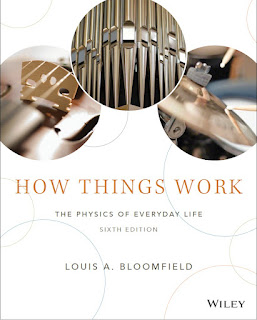
About The Book
HOW THINGS WORK is about ordinary objects and the physics concepts that make them possible. Its cover illustrates how often waves appears in our world. While ocean surf is clearly an example of waves (p. 250), so is the light form the lighthouse, the rippling motion of the guitar strings, and the sound emerging from the CD in its player. When you pluck a guitar song, you fill it with waves. The strength of these waves and the timbre of the resulting sound depend upon where and how you plucked the string and on the structure of the guitar itself. You can distinguish a guitar from a piano or help by listening for the unique mixture of waves on its strings (p. 242). A lighthouse uses an enormous lens to bend light waves from its lamp into a narrow beam that sailors can see for a hundred kilometers. A large-diameter lens is needed because waves leaving a small-diameter lens spread outward like ripples on a pond and can’t stay together as a bright, narrow beam (p. 427). A CD encodes the air pressure fluctuations in sound waves as a pattern of tiny pits on its shiny surface. The CD player reads these pits with a laser to reproduce the recorded sound. Arcs of audio and error-recovery information are arranged in a spinal around the disk’s center so that a scratch outward from the middle of the disk is unlikely to cause any noticeable loss of music (p. 424).



Add Comment